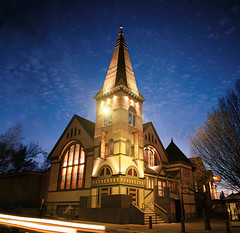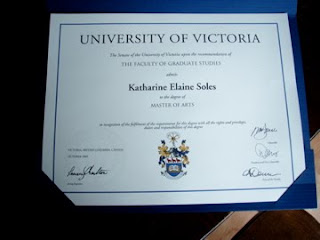






















I had an amazing time running the Oak Bay Kool Half Marathon yesterday; it was my first half and it felt like a great accomplishment. I finished in 1:38:30, which placed me 95th overall out of 611 participants and 5th out of 63 in my category (women aged 25-29).
The race organizers did a great job: we started right on time, the volunteers tirelessly cheered us on and, not surprisingly for Oak Bay, the course was as scenic as they come. I'm thrilled with my result and will definitely be back to improve next year!
(click the map to view the race route)

The subjectivity of revelation and interpretation becomes one of the novel's main themes; one person's insight equals another's madness. McEwan weaves sanity and insanity so tightly together that, at times, the reader can't tell them apart. The book also turns on the pivot of coincidence, the bizarre quirks of fate that both plague and delight human life. The story constantly asks, "what if...?", which is precisely what makes it such a haunting read.




So back to the question of what attracts me to Moore's poetry. Firstly, to say that Moore was a character is a gross understatement; she never had a romantic relationship, she always appeared in public wearing a tri-corned hat and a cape, and she referred to her mother and brother as "Mole" and "Badger" respectively because of her fascination with Wind in the Willows. But, moreover, the persona of Moore's poetry is an incredibly engaging and challenging puzzle. In early work, Moore emphasized a need for discipline and heroic behavior; later, she stressed the need for spiritual grace and love. To survive, she hinted, one must be alert, disciplined, and careful; as she put it, "What is more precise than precision? Illusion." Moore was extremely concerned with morality but never preached though she often questioned her role as an artist and, specifically, as a poet. Her shortest poem, "Poetry," reads: "I, too, dislike it. / Reading it, however, with a perfect contempt for it, one discovers in / it after all, a place for the genuine." So was Moore modern or anachronistic, imagistic or objectivistic, lofty or realistic? Critics continue to debate.
Unarguably, Moore's expression is characterized by deftness and sharpness of detail, linguistic experimentation, and integration of fresh observation. She teases the reader into looking at reality with keener vision, as if seeing the world for the first time. She also challenges the reader to accept both the opposition and the unity between real and imaginary, animate and inanimate, ideal and object; she invites the reader to realize both the power and the futility of words. As she says in my favourite quote of hers, "Psychology which explains everything explains nothing, and we are still in doubt." To those who complained that her poetry often seemed obscure, Moore once replied that something that was work to write ought to be work to read. Why did I choose to write on Moore? To attempt to untangle her complex network of observation and to explore an oeuvre dedicated to courage, loyalty, patience, modesty, spontaneity, and steadfastness.

